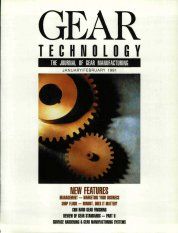Runout is a troublemaker! Good shop practice for the manufacture or inspection of gears requires the control of runout.
Runout is a characteristic of gear quality that results in an effective center distance variation. As long as the runout doesn't cause loss of backlash, it won't hurt the function of the gear, which is to transmit smooth motion under load from one shaft to another. However, runout does result in accumulated pitch variation, and this causes non-uniform motion, which does affect the function of the gears. Runout is a radial phenomenon, while accumulated pitch variation is a tangential characteristic that causes transmission error. Gears function tangentially. It is also possible to have a gear with accumulated pitch variation, but little or no runout.
